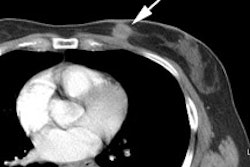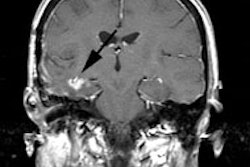J Nucl Med 2002 Mar;43(3):325-9
Whole-Body (18)F-FDG PET and Conventional Imaging for Predicting Outcome in
Previously Treated Breast Cancer Patients.
Vranjesevic D, Filmont JE, Meta J, Silverman DH, Phelps ME, Rao J, Valk PE,
Czernin J.
This study was conducted to determine the ability of (18)F-FDG PET and
conventional imaging (CI) to predict the outcomes in breast cancer patients who
have previously undergone primary treatment. METHODS: The study population
consisted of 61 female patients (median age, 54 y; range, 32--91 y) who were
reevaluated with (18)F-FDG PET and CI after treatment. The median interval
between the last treatment and PET was 0.4 y (range, 0--16 y). PET was performed
within 3 mo of CI (median interval, 25 d; range, 2--84 d). To determine the
independent impact of PET on outcome, PET images were reinterpreted in a blind
fashion. Availability of clinical information after PET scanning (21 plus minus
12 mo) was required for study inclusion. Study endpoints were clinical evidence
of progression of disease or death. RESULTS: Of 61 patients, 19 (31.1%) had no
clinical evidence and 38 (62.3%) had evidence of residual or recurrent disease
by the end of follow-up. Four patients (6.6%) had died. The positive and
negative predictive values (PPV and NPV, respectively) of PET were 93% and 84%,
respectively. CI yielded a PPV of 85% and an NPV of 59%. The prognostic accuracy
of single whole-body PET was superior to that of multiple procedures with CI
(90% vs. 75%; P < 0.05). Kaplan--Meier estimates of disease-free survival in
patients with negative PET findings compared with those with positive PET
findings revealed a significant difference between the 2 curves (log-rank test =
0.001). Kaplan--Meier estimates of disease-free survival stratified by CI
results showed a marginally significant difference between CI-positive and
CI-negative patients (log-rank test = 0.04). CONCLUSION: FDG PET can be used to
improve prediction of the clinical outcome of previously treated breast cancer
patients relative to what is achievable through CI alone.





